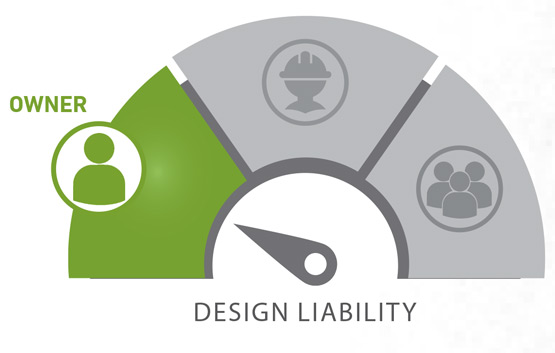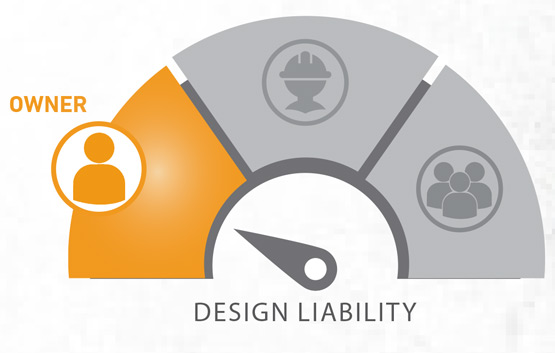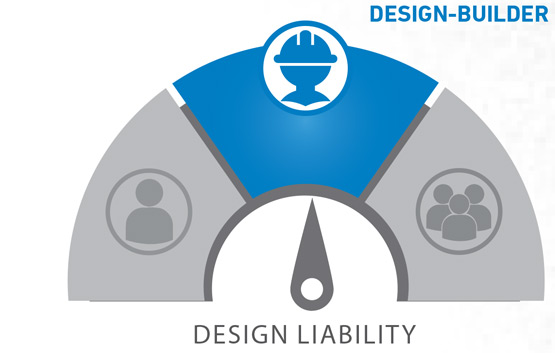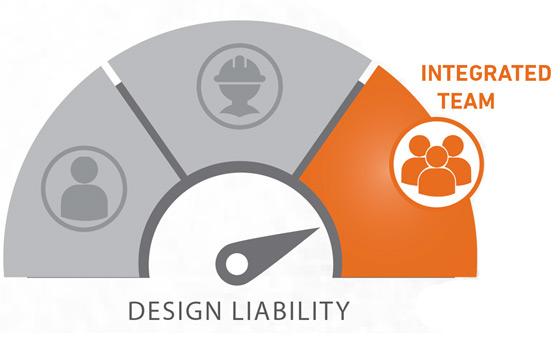Project Delivery Methods
Our core capability is aligning all project contributors regardless of contracting method. Alignment means understanding the needs of the owner – business purpose of the project, design and functionality aspirations, stakeholder requirements, risk tolerance, cost and schedule – and continuously focusing every participant’s efforts to meet those needs. Ultimately it means delivering the facility you want, on time and on budget, with the outcomes you need for your capital investment.
We will gladly work within your prescribed delivery method, or recommend one to best suit your situation. Regardless of the method, we believe early engagement of the right partners is the key to success.
Design-Bid-Build


PROS
Bidding
Competitive bidding of work to General Contractor
Clarity of Scope
Project scope finalized prior to start of construction
Single Bid Package
A/E prepares one set of bid documents vs. phased "big packages"
CONS
Reduced Quality
No input during design phase from contractor on alternative materials, equipment, or methods that may save money, improve quality, or save time
Delays & Cost Over-runs
Schedule delays due to redesign when bids come in over budget
Increased Time of Delivery
Total duration of project delivery is typically longer
Change Orders
If project scope is incomplete or unclear, it may result in adversarial relationships and potential claims
Limited Collaboration
No opportunity to design to a target budget
Limited Space for Innovation
General Contractor has no opportunity to bring solutions that save time and money
Lack of Input
No Owner input for subcontractor selection
Reduced Opportunity for Savings
All cost savings accrue to General Contractor; no open book accounting
Construction Manager at Risk


PROS
Open Book Accounting
Savings accrue to Owner or are shared
Faster Delivery
Early CM involvement allows for earlier start of construction and schedule compression
Bidding
Competitive bidding of work to subcontractors
Procurement Input
Owner input on all subcontractor selections
Financial Certainty
CM manages project budget throughout design and construction
Highly Collaborative
Owner, CM and A/E team work collaboratively
Improved Quality
CM input on alternative materials, equipment or methods that may save money, improve quality or save time
Contract Price
Contract Price based on the defined scope is established prior to construction
CONS
Bid Packages
Includes the use of multiple “bid packages” produced by the design team increasing risk to Owner
Fewer Qualified Firms
GCs with experience delivering projects in a D-B-B role may lack preconstruction and construction management capabilities
Owner Effort
Requires more owner resources up front
Design-Build


PROS
Single Source of Responsibility
One entity is held accountable for design, cost, schedule, and performance
Cost Savings
An integrated team is efficient and innovative
Relationship with Designer
The Owner/Designer interface is maintained, while being enhanced by Design-Builder participation
Contract Price
Contract Price established prior to construction; earliest certainty of price
Decreased Administrative Burden
Owners can focus on the project rather than managing disparate contracts
Procurement Input
Owner input on all subcontractor selection
Open Book Accounting
Savings accrue to Owner or are shared
Bidding
Competitive bidding of work to subcontractors
Bid Packages
Risk of multiple bid packages carried by Design-Builder
Faster Delivery
Collaborative project management means work is completed faster with fewer problems
Reduced Risk
Design-Build team assumes additional risk, shifting the risk away from the Owner
Better Quality
Design-Builders meet performance needs, not minimum design requirements, often developing innovations to deliver a better project than initially imagined
CONS
Fewer Qualified Firms
GCs and CMs with experience delivering in a D-B-B or CMAR role may lack expertise in D-B delivery
Procurement Laws
When used in the public sector, only permitted by certain Federal Agencies, States or Municipalities
Integrated Project Delivery


PROS
Highly Collaborative & Integrated
Owner, CM and A/E team work collaboratively as one team
Scope & Budget Alignment
IPD uses a target cost approach maintained through consistent, real-time trending reports
Minimal Scope Gaps
Early on-boarding of trade partners mitigates cost escalation and scope gaps
Faster Decision-Making
Collective team buy-in promotes a faster decision making process
Cost Savings
An integrated team manages change in a more nimble, effective manner and eliminating redesign costs
Improved Productivity
An achievable workflow minimizes waste and rework
Shared Risk & Rewards
Risks and rewards are managed collaboratively
Open Book Accounting
Savings accrue to Owner or are shared
Target Cost
Established prior to design; earliest certainty of price
Procurement Input
Owner input on all subcontractor selections
CONS
Fewer Qualified Firms
Fewer firms have delivered projects via IPD
Less Familiarity
Owners and architects less familiar with this process are less inclined to pursue it
Trust Isn’t Automatic
This approach requires all team members to “buy in” to a change in culture and approach